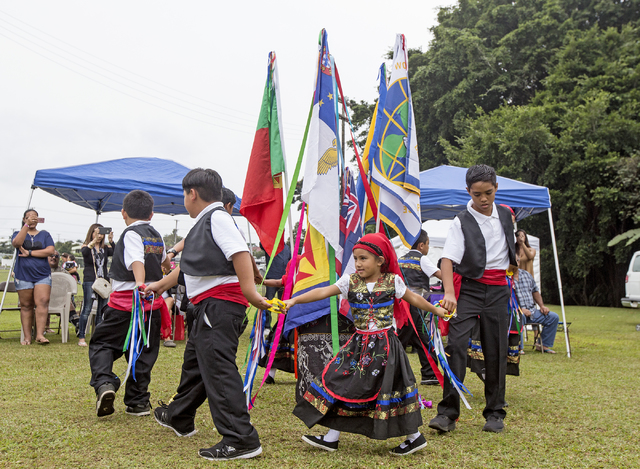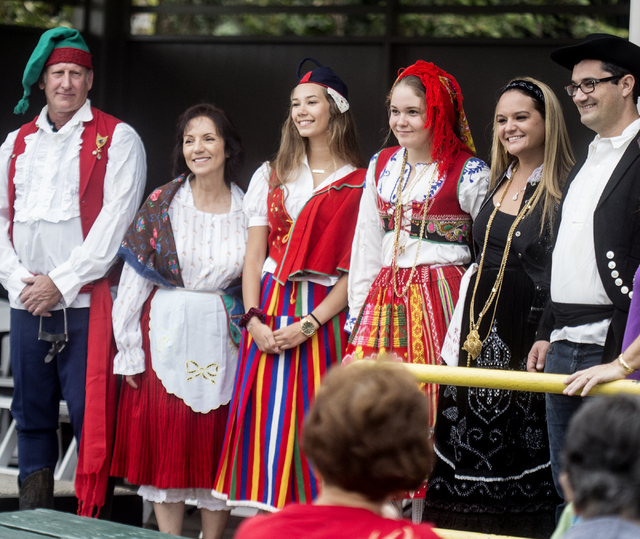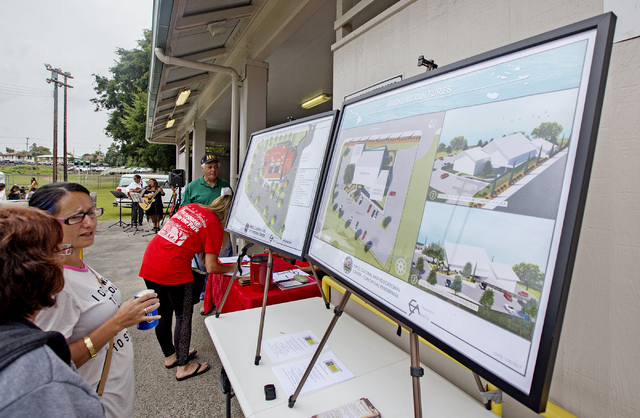A celebration of culture
Você fala português?
ADVERTISING
In the early years after the first ships of Portuguese immigrants landed in Hawaii, the answer was easy: Yes, I speak Portuguese. But these days that answer is harder to come by.
Marlene Hapai of the Hawaii Island Portuguese Chamber of Commerce remembers her own childhood in Honokaa, full of Portuguese singing and traditional dances. But those are harder to come by now, too.
One place where they can be found is the annual Portuguese Day in the Park, now in its 23rd year, which took place Sunday at Carvalho Park.
The day began as a way to celebrate Portuguese culture. Now it is a way to help preserve and perpetuate what is being slowly lost. It’s also a way to raise awareness and funds for a center that will be able to tell the Hawaii Portuguese story year-round.
“The question is, why is a Portuguese educational and cultural center needed?” Hapai said. “The reason is the Portuguese culture in Hawaii is endangered.”
“These kinds of events really make Hilo special,” said state Sen. Kai Kahele, who attended the event and previously helped secure a $1 million legislative grant for the future cultural center.
Land for the center, located at the corner of Komohana Street and Ponahawai Street, was donated in 2006. In 2014 members of the Portuguese Chamber of Commerce began clearing the land. Two years later, fundraising efforts began.
One thousand signatures from the community and 550 letters were submitted to the legislature last year in support of the center. The community backing, combined with the fact that the land was already secured and a conceptual plan already developed thanks to in-kind architectural work by Esrkine Architects, helped make the case for the project.
“It’s not just the legislature that’ll help build this center,” Kahele said. “It’s the community.”
The center is expected to cost $4.2 million to complete.
“It’s something we all believe in and want to make happen,” Hapai said.
On Sunday, festival attendees fueled up on coffee, sweet bread, and linguiça sausage. By 9:45 a.m., the line for hot malasadas was already 25 people long and beginning to wrap around the lawn.
Sophia Hanoa of Pahala strummed a mandolin while her eight grandchildren performed a traditional Portuguese dance. The keiki wore handmade outfits — black vests and blouses trimmed in with rich golds, blues and reds — and shook small tamborines trimmed with ribbon as Hanoa sang of the chamarrita, a dance from the Azores.
Later, the keiki changed into neon yellow T-shirts to give a Portuguese martial arts demonstration, a tradition so obscure even Hapai had to look it up online.
“That’s the educational part,” she said. For years, she couldn’t find anyone to perform the dances at Portuguese Day in the Park.
“We’re really happy (Hanoa) has picked up the charge,” Hapai said.
Inside the gymnasium, people sat at a table to try their hand at bisca — a card game played in pairs — and browsed a table of Portuguese ceramics, copper pots, cork, woven baskets and a very old coffee maker resembling something out of a chemistry set.
Others gathered around a genealogy booth, reading over posterboards detailing how Portuguese immigrants first came to Hawaii in the late 1870s, seeking a way out of the poverty of their homeland. The first ship to arrive, Priscilla, came in 1878. There were 28 more voyages after that, with the final sail in 1913.
Nearly all Portuguese came from the Azores or Madeira archipelagos. The trip to Hawaii was some 15,000 miles, across the Atlantic Ocean and through the Straits of Magellan (a meaningful moment, perhaps, given that Ferdinand Magellen himself was Portuguese) before crossing half of the Pacific Ocean.
The records of these journeys are all contained in ship manifests. The manifests list the names and place of origin for immigrants as well as their profession and the names of the family members who traveled with them.
Ships traveling to Hawaii landed on the Big Island first before continuing to Honolulu.
Festival volunteer Dolores Ramos’ family came on the first ship, Priscilla. Ramos lives in Paauilo and made the drive down to Hilo for Sunday’s event so she could share her personal copy of the ships’ manifests: all 29 of them.
Most people who stopped by the geneaology booth knew fragments of their ancestors’ history, such as where they came from and what town they settled in, but few knew the names of the boats that brought them across the sea.
For those that did know, being able to fit the family puzzle pieces together was a thrill.
One woman who browsed the manifest copies matched the ship name with her family name and “was so excited,” Ramos said. “She was so excited to find her people.”
Hapai said she hopes a new center will foster more of those moments. She recently read a book of Hawaiian history that had just one reference to the Portuguese diaspora.
“‘1878: Portuguese arrive,’” she said. “It’s not faulting anyone, but somehwere, somehow along the line, something got lost.”
For more information about the Portuguese education and cultural center, visit www.hipcc.org.





